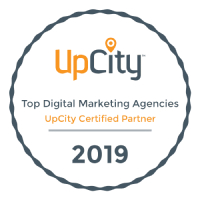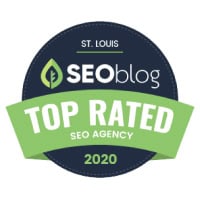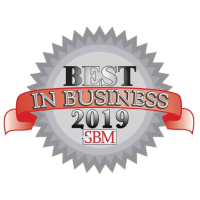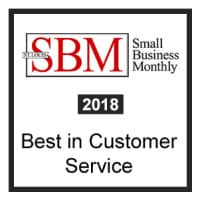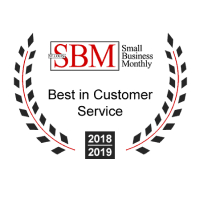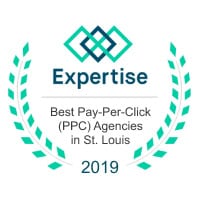
It has been about six months since the world first turned upside down. From mandatory shutdowns to supply chain disruptions, businesses had to quickly come to grips with the understanding that this new normal was absolutely not normal. Some companies had to adopt new safety protocols as they grappled with what it meant to be essential. Others had to lean into creative ideas to keep their employees working as customers hunkered down at home. As in most times of crisis, companies had to learn on the fly how to adapt to survive.
What do you do, as a business, when your customer’s needs shift overnight? Can you adapt in-person processes to an online world? How do you pivot to rise to a rapidly evolving marketplace? What do you do when what always worked before, doesn’t work now?
Hobbled by COVID-19, many of our clients are asking these very questions. Industries from healthcare to communications software have been upended by this virus, and every company is feeling it differently. One common theme among almost every industry is this: the time to identify ways to improve your digital marketing is NOW.
The first step in this process shouldn’t be a surprise to anyone who has ever worked with the team at Seafoam: you have to look at the data. If your customer’s behavior has changed in the past six months, the data should reflect that. So how can you tell if your past digital marketing strategy is no longer working?
There are a number of ways to determine if your digital marketing has taken a hit in recent months. Initially, the first indicator may feel a little more intuitive. Maybe the phone is not as busy, or appointments are down. Perhaps your team’s schedules are not quite as full or, after years in your industry, something just feels off. Trusting your gut is important in the world of business, but it should always be coupled with a look at the data. If you can combine these two, you may be able to get a handle on your issue and rebound far more quickly. So jump into the data!
One of the first stops on this data train is to look into analytics to see what the traffic to your site looks like. A word of caution, however, when looking at the data you find in analytics... Looking at one data point fixed in time can sometimes offer opportunities for misinterpretation. Instead, look at the data from a couple of angles to get a full picture of what’s going on.
While this is not an exhaustive list, it should put you on the right path to understanding how COVID-19 has impacted your brand. Analytics is not the only place to look to understand how your users are behaving. In addition to understanding traffic patterns on the site, you can also look to other channels to see how your users are engaging with the brand.
As COVID-19 forced more and more people to be at home, social media usage climbed. It became a safe way to interact with friends and family while you were stuck in the house. Sales people took to LinkedIn when their regular contacts weren’t in the office any more. Unburdened by typical workplace restrictions, many users hung out on Facebook while working remotely. In short, social networking surged during the pandemic.
For many brands, this offered a golden opportunity to reach new customers and engage with existing customers. It provided a way for B2C brands to communicate new guidelines, restrictions, and even special offers in real time. Bored users also spent time showing support for their favorite brands on these platforms. Creating engaging content in these times became the name of the game. Some brands did an excellent job, which we will highlight below. But there were also brands that floundered during this crisis period.
Did you see a dip in engagement? Did you struggle to get users to even see your posts? During the COVID -19 pandemic, social media saw an increase in engagement for many brands. If your brand was not one of them, what happened?
You might notice a trend. For many brands, what worked before quit working during the pandemic, in part because the nature of the conversation changed. A deeper look at social media and the brands that did well during the crisis highlights the need to speak authentically in the moment to the moment. Another indicator of this can be found in keyword data.
If you have invested in SEO in the past several years, you understand how important it is to find the right keywords and rank for them. This can take a lot of time and effort to get just right. The perfect keywords can bring a TON of value to the brand, funneling users from awareness to intention to conversion. Between paid ads and organic rankings, keywords allow brands to target exactly what their target audience is looking for. So what happens when that intent shifts?
One data point that can’t be overlooked is your conversion rate. If your keywords are still ranking at the top, but they are no longer converting, you have to recognize that you have a problem. This may be the clearest indicator that what once worked is no longer working. The question you have to ask yourself is this: what changed? How have your user’s needs shifted, and what do you think they are searching for now? In the COVID era, the answer to what changed might just be – everything.
If everything has changed, then your digital marketing efforts have to follow suit. From your keywords to your messaging, your brand’s strategy must evolve to meet your users' new needs. So perhaps the better question to ask is, how has COVID-19 impacted the customers within your industry? And what can you do to help?
Taking a deep dive into how your users lives have changed can be an impactful exercise into understanding how your marketing needs to shift.
It is only after you answer these questions that you can truly understand how your brand’s messaging needs to shift. And believe us when we say, it needs to shift. The conversation online has completely changed, and your brand should not try to pretend that it hasn't.
Speak to the issues that your users are facing, in an authentic manner. Show them that you understand the hardships and frustrations that they are facing. Then you can offer solutions appropriate to their needs.
Remember when we talked about all of the brands that did so well on social media during the pandemic? Let’s look at a few:
Kids were hit pretty hard during the pandemic. All of a sudden, their whole worlds shifted in a pretty scary way. They had to learn the new rules of the world, so to speak. No play-dates (or hugs and high-fives) with their friends, no going to school, and LOTS of hand washing. The ever popular building block brand, LEGO, decided to speak to the miniature sized demographic through the voices of their ultra-popular characters created for the LEGO movie franchise. For fans, the characters offer their PSA's in a fun, lively, and completely on brand way.
Note that playing with LEGOS AND watching LEGO movies are two great ways to spend some time while quarantined, but the brand didn’t even have to mention that. By reminding users of the simple magic behind the brand, and helping parents talk to their kids about a crazy new set of rules, the LEGO brand further endeared itself with parents and kiddos alike.
As shut downs hit small, local businesses especially hard, many companies struggled to keep their employees working. Overnight revenue dried up. One Saint Louis-based screen printing company, Tiny Little Monster, decided to think bigger than just their business. As a B2B brand, they saw many of their customers struggling and decided to create a campaign to help. And because they were a screen printing company, they built their campaign using their core capabilities in a simple and authentic manner; and BOY did it take off!
The #hereforgood hashtag and website offered custom t-shirts for local small businesses impacted by the shutdown, providing a much needed cash flow for the participating brands. The concept was simple: buy a t-shirt and support a local business with $10 from every purchase going straight to each participating company. Their social media messaging shifted completely, with posts that focused on the campaign and on all of the businesses involved.
Beyond simply helping local businesses, Tiny Little Monster reached out to their counterparts across the country and helped them build their own #hereforgood campaigns. All told, the #hereforgood movement reached 34 states and raised hundreds of thousands of dollars for small businesses across the country.
The passion for this project showed in every post, every follow up comment, and every t-shirt Tiny Little Monster made. The conversation absolutely shifted to meet the time, but it was so much more than that. The conversation was authentic, compassionate, and inclusive; which is why so many users jumped on board. It goes to show that one really good idea, and some passionate marketing, can really make an impact.
Of course, creating a powerful statement is a bit easier when you are working on something fun and approachable like t-shirts and t-ravs. (If you are not in St. Louis, you need to call us for an explanation and an invitation to dinner next time you are in town.) What do you do, however, when your brand is all about keeping businesses moving? How do you cope when the world of business comes to a screeching halt and then moves exclusively online? This is the trouble that Newtec Services, an information technology company that specializes in managed IT services and network security, faced as the pandemic raged on.
Newtec Services had invested in digital marketing for a number of years. They were ranking for their core keywords, and some really great leads were coming in the door. Then, early in 2020, the bottom seemed to drop out from under them. While their core keywords continued to rank, the traffic and the leads associated with said traffic was no longer there. A global pandemic was not the time to see traffic drop, and Newtec Services knew that they needed a new approach to tackle the issue.
Turning to social media was not the silver bullet that it proved to be for the #hereforgood campaign in our previous example. This was not a situation that allowed for a B2C type rallying cry. After all, the core demographic for this brand was not the average t-shirt wearer (which is everyone.) Instead, the target audience was medium sized business owners and IT professionals looking to expand their bandwidth. Moreover, many of these users were no longer working in the office, so traditional sales outreach instantly became a whole lot more difficult.
Newtec Services decided to follow many of the same steps we outlined above, looking at the new problems facing their users and creating solutions that would help tackle these issues. Knowing that Google was going to be a big part of the conversation, keyword research was in order. As a brand, Newtec Services needed to understand what was driving the conversation in this new era. They took to their website, creating pages that spoke to these issues in a technical yet informative way.
Working with many of their existing clients, they dug in to find a greater understanding of the problems that COVID-19 had created for their industry and worked to explain how their brand could offer solutions. As with any SEO tactic, the return on this tactic was not instantaneous, but the brand has seen an increase in their leads as these pages pick up steam.
While the world is slowly returning to some semblance of normal, the reverberations of COVID-19 are probably here to stay. So, how has your brand shifted its messages to speak to this new way of working? What are your clients saying about their struggles, and how are you rising to meet the occasion?
If you are not sure how to answer any of these questions, help is just a phone call away. At Seafoam Media, we help brands of all sizes tackle some of their biggest digital marketing challenges. We take the deep dives, looking at changes in the marketplace, to help craft a strategy that will not only prepare you for the world today but also help to propel your brand into the future. No matter what crazy things 2021 may bring, we are here to help your brand succeed. We would love to chat about your particular brand. Call us today, or schedule a (virtual) discovery session with our team.

